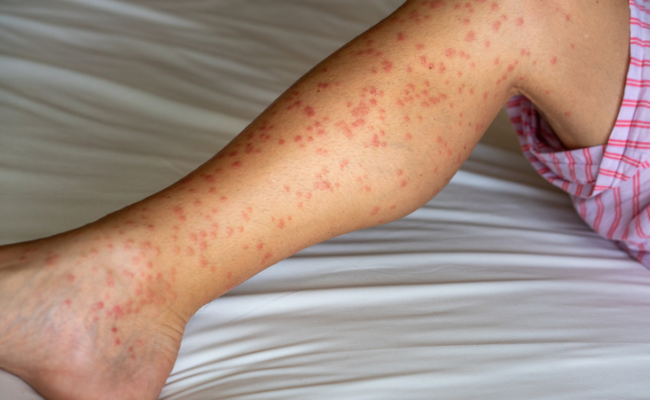How to Treat Papular Urticaria?
- October 05, 2023
- No Comments

What is Papular Urticaria?
Papular urticaria is a skin condition characterized by the development of itchy, red bumps or papules on the skin. These papules often result from an allergic reaction to insect bites, typically from fleas, mosquitoes, bedbugs, or other insects. While the condition is more common in children, adults can also be affected. Papular urticaria is a result of an allergic response to insect bites or stings, manifesting as itchy red bumps on the skin. Depending on their size, these bumps can evolve into fluid-filled blisters known as vesicles or bullae.
Why Papular Urticaria Occurs?
The primary cause of papular urticaria is an allergic reaction to insect bites. When an individual is bitten by an insect, the body's immune system reacts, releasing histamines and other chemicals that lead to the characteristic red, itchy bumps. Some individuals may be more sensitive to insect bites, making them more prone to developing papular urticaria.
How to Treat Papular Urticaria?
- Avoid Scratching: While it can be challenging, avoiding scratching the affected areas is crucial. Scratching can worsen the condition, leading to potential infection and scarring.
- Topical Corticosteroids: Over-the-counter or prescription-strength topical corticosteroids can help reduce inflammation and alleviate itching. These should be applied as directed by a healthcare professional.
- Antihistamines: Oral antihistamines can provide relief from itching and help prevent further allergic reactions. Non-drowsy formulations are often preferred during the day.
- Cool Compresses: Applying cool compresses to the affected areas can help reduce inflammation and soothe itching.
- Anti-Itch Creams: Over-the-counter anti-itch creams containing ingredients like hydrocortisone can provide relief. However, it's essential to follow usage guidelines and consult with a healthcare professional if needed.
Treatment Solutions for Papular Urticaria:
- Identifying and Avoiding Insect Bites: Understanding the types of insects that trigger the condition and taking measures to avoid bites can be a proactive approach. This may include using insect repellents, wearing protective clothing, and avoiding areas with a high concentration of insects.
- Maintaining a Clean Environment: Regular cleaning of living spaces, especially bedding and carpets, can help reduce the presence of fleas and other insects that may contribute to papular urticaria.
- Consulting a Healthcare Professional: If the condition persists or worsens, it's crucial to consult a healthcare professional. They can provide a thorough evaluation, identify potential triggers, and recommend appropriate treatments.
Benefits of Treating Papular Urticaria:
- Relief from Itching: Treating papular urticaria helps alleviate the intense itching associated with the condition, improving overall comfort.
- Prevention of Complications: Avoiding scratching and promptly treating papular urticaria can help prevent complications such as infection, scarring, and the development of more severe skin conditions.
- Improved Quality of Life: By addressing the symptoms of papular urticaria, individuals can experience an improvement in their quality of life, allowing them to go about their daily activities without the discomfort of constant itching.
- Preventive Measures: Identifying and avoiding insect bites not only helps in treating papular urticaria but can also serve as a preventive measure, reducing the likelihood of future outbreaks.
Comments (0)